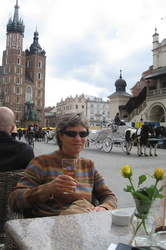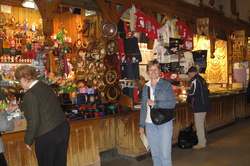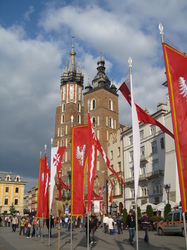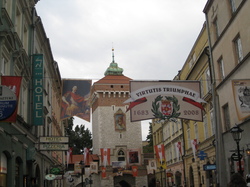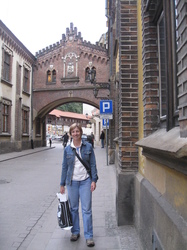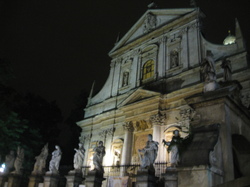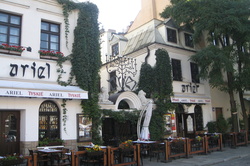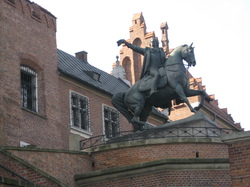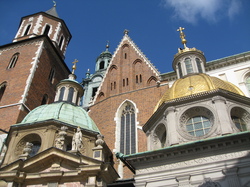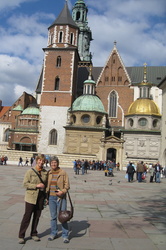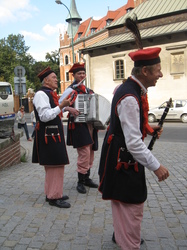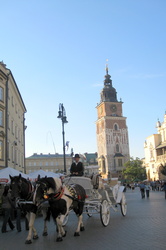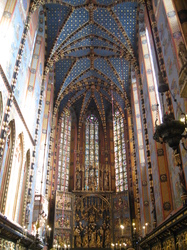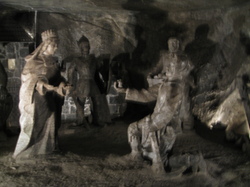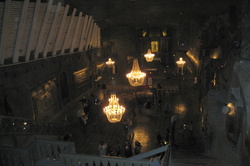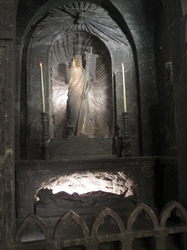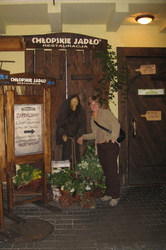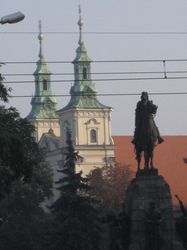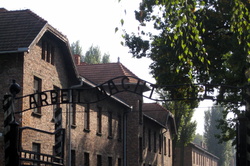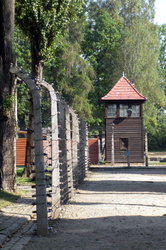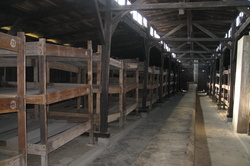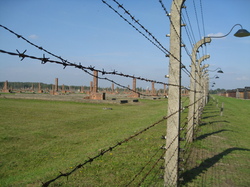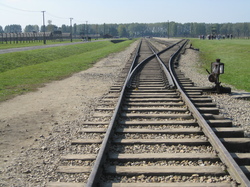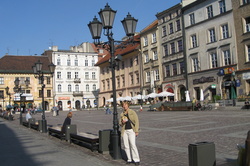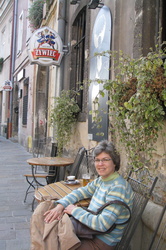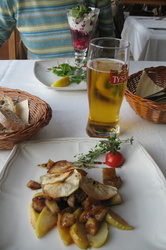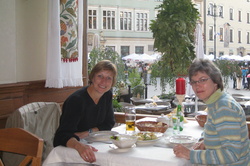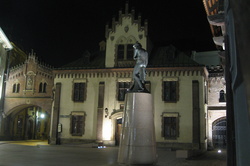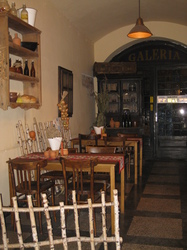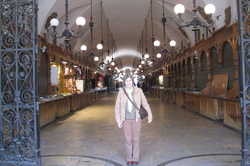Krakow, Poland- September 2008
September 27 we flew out of London for a pilgrimage to Krakow, Poland. Carlyn's mother Joyce's parents were both 100% Polish from the Lublin area and Carlyn was excited to visit the home of 50% of her roots.
What a beautiful place. We toured the city, the Wieliczka Salt Mine, and Aushwitz-Berkenau. The latter was emotionally draining but such a learning experience.
We consumed Polish cuisine by the plateful and had to detoxify from the amount of lard which is used with no abandonment in all of their food. We ate our weight in pirogues (meat or cheese filled dumplings) as well as sampling all things Polish; herring, potato pancakes, potato dumplings, sauerkraut soup, cabbage rolls, Barszcz czerwony, a beetroot soup served clear with dumplings, and Żurek, a sour rye soup with potato and sausage . Accompanying these delights, Polish premium lagers, Zywiec and Tyskie, which pack a pretty good punch with a 5.7% alcohol content.
